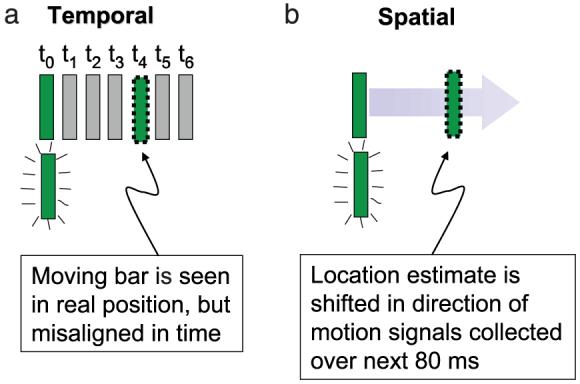Figure 1.

Temporal and spatial hypotheses for the FLE. The solid colored bar shows the real position of the bar at the time of the flash; the dashed bar shows the perceived position (size of illusion is exaggerated for illustration). (a) Temporal models, such as the LD model, propose that the moving object is seen in a real position but misaligned in time. In this example, the moving object and flash both occur at t0. However, if moving objects are perceived more quickly than flashes, the flash at time at time t0 is perceived as simultaneous as the bar at time t4. (b) A spatial model proposes that the FLE results from instantaneous-position computations being influenced by motion signals collected for ∼80 ms after triggering by the flash. In other words, when the brain is asked “where was the bar at the moment of the flash?”, the localization is dragged in the direction of the motion that happens over the next ∼80 ms. Note that the influence of the events after the flash makes the perception postdictive (Eagleman & Sejnowski, 2000a) rather than predictive (Nijhawan, 1994). As this model involves a temporal window of integration, it might also be called “spatiotemporal”; for simplicity, we refer to it as “spatial” to put the emphasis on the mislocalization of position.
